What did you build today (Pictures) ?
-
It is actually very simple project: I followed this guide -> http://www.sysrun.io/2017/02/22/use-a-esp8266-to-control-your-ac-via-mqtt/ and used a pn2222a to boost the IR Led.
Also the app is very simple: just link each item to one of the topics.
It was meant to be a simple stand alone solution, connected to an external mqtt broker so you can turn on heating/cooling before coming back home without using any complex Home automation system. It is still in the test phase as I just have the IR led transmitting something and I have to test if it is actually working with the Daikin unit I need to control (it is not in my house so I have to way for the real test) -
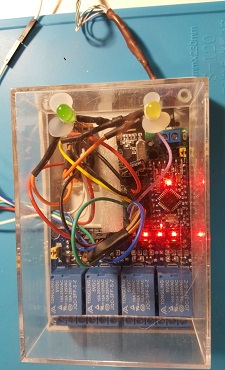
With help of @dbemowsk @sundberg84 I was able to complete my "CV All in one sensor" using the easy PCB. ;-)
It now replaces 2 Arduino Nanos with only 1 Easy PCB. Currently the 0,1u Capacitor is missing, however as I was told by the designer it still could work. And it does.This node:
- monitors the pipes of my central house heating,
- Is able to detect if the heating unit has a leakage.
- Switches on the light if the door is opened
- if the humidity in the bathroom becomes to high, or somebody is cooking.. It will start the BRINKS central WTW.
- Can reset my OTGW unit if it has a lock up.

-
4x cheap load cells under each foot of my bed
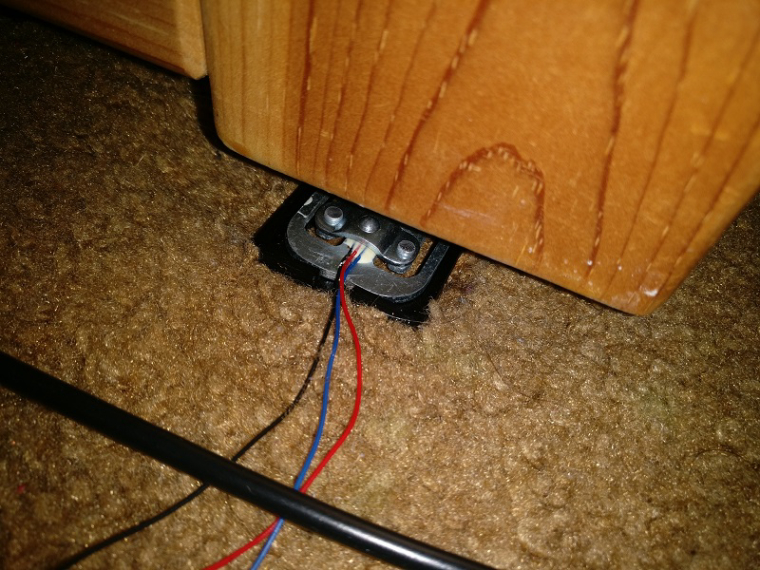
Sparkfun HX711 breakout and an Arduino
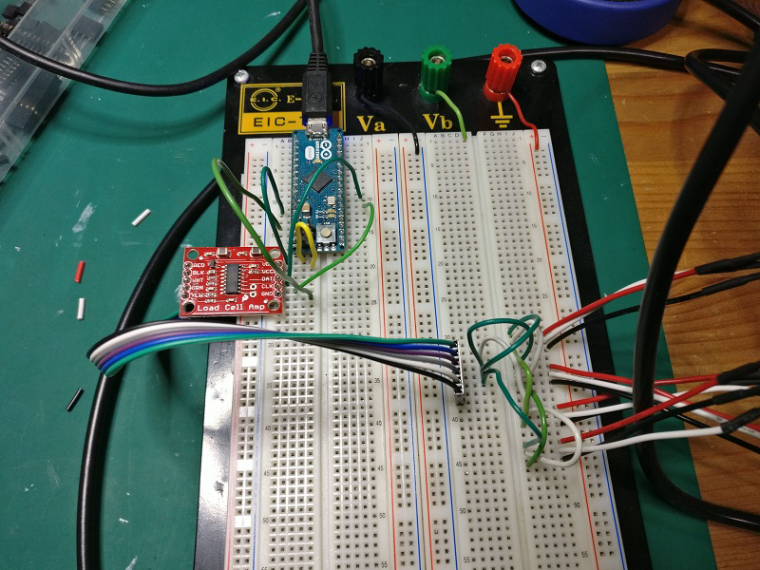
Was going for a bed occupancy sensor, but I got a pretty decent scale out of it, it is sensitive enough that it registers if I put my water bottle down on the bed.
-
4x cheap load cells under each foot of my bed

Sparkfun HX711 breakout and an Arduino

Was going for a bed occupancy sensor, but I got a pretty decent scale out of it, it is sensitive enough that it registers if I put my water bottle down on the bed.
@SquareKinematics said in What did you build today (Pictures) ?:
Was going for a bed occupancy sensor, but I got a pretty decent scale out of it, it is sensitive enough that it registers if I put my water bottle down on the bed.
Sounds awesome if it's that precise, could you make a post in "My Project" with reference to the load cells you used, wiring and some test code ? Thank you in advance :)
-
@SquareKinematics said in What did you build today (Pictures) ?:
Was going for a bed occupancy sensor, but I got a pretty decent scale out of it, it is sensitive enough that it registers if I put my water bottle down on the bed.
Sounds awesome if it's that precise, could you make a post in "My Project" with reference to the load cells you used, wiring and some test code ? Thank you in advance :)
@Nca78 I will be sure to do that when it's done, it's still a little rough around the edges :)
-
Today I made a pogo pin programming board for my Logger. (The logger works except one last thing... Rev 5 here we come!)
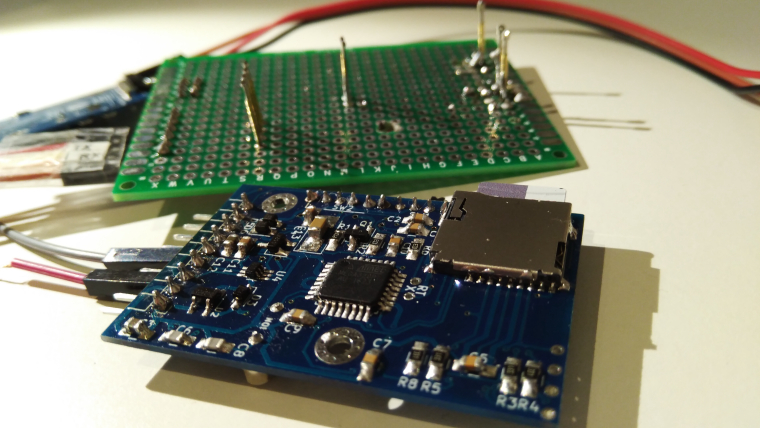
-
I've been playing with an Adafruit AudioFX board and cobbled together this annunciator. Eventually it will be a MySensors node to play alarms or other sounds. It is using a cheap portable speaker to play the sounds. I got it to work with my doorbell button node today.

-
Last fix done on my Logger... I will send it to pcb house today and probably publish a beta on openhardware. Probably nothing special but for me as hobby pcb maker this has been a challenge and great knowledge increase in using oscilloscope and new components.

Tomorrow Black Friday!! (I work in retail so that's a high focus now...)
-
Yesterday received the PCB. Today assembled for testing this battery-powered nRF52-based passive infrared motion detector:
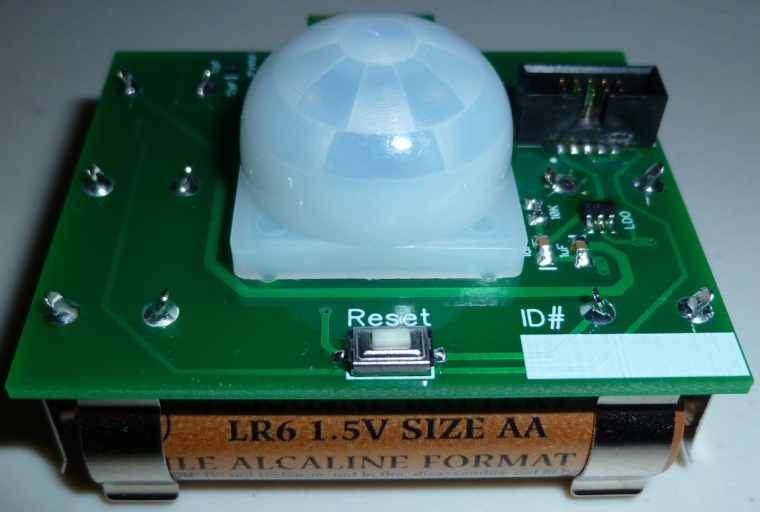
-
Yesterday received the PCB. Today assembled for testing this battery-powered nRF52-based passive infrared motion detector:

Battery powered MySensors Washing machine & dryer monitor, using LDR's to monitor LEDs on front of the appliances.
Each time a LED toggles, the node wakes from interrupt and sends a message. Easy peasy!
When a device is ready, I'll get a message on my mobile phone :smile: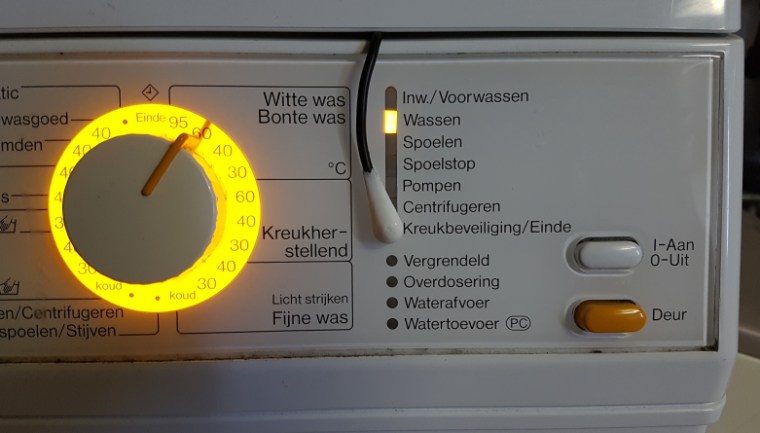
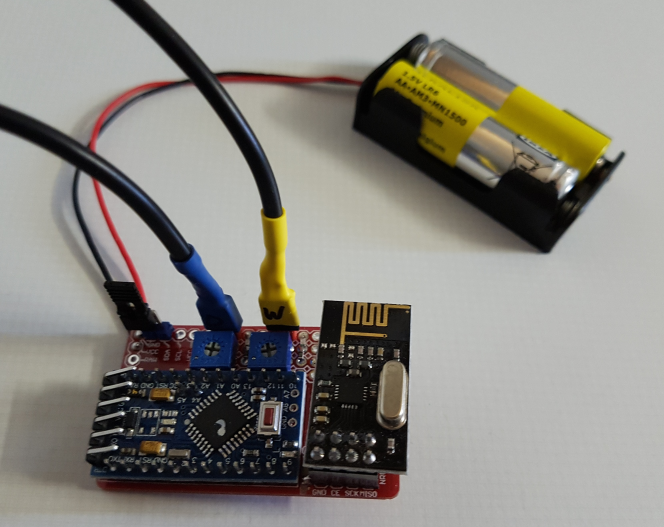
Still need to stuff it in an enclosure...
-
Battery powered MySensors Washing machine & dryer monitor, using LDR's to monitor LEDs on front of the appliances.
Each time a LED toggles, the node wakes from interrupt and sends a message. Easy peasy!
When a device is ready, I'll get a message on my mobile phone :smile:

Still need to stuff it in an enclosure...
-
@Yveaux said in What did you build today (Pictures) ?:
Still need to stuff it in an enclosure...
Yes, definitely very low WAF 😁
@gohan - you mean HIGH waf? :) I really like the design... (if the first picture is only what you see)
-
@gohan - you mean HIGH waf? :) I really like the design... (if the first picture is only what you see)
@sundberg84 said in What did you build today (Pictures) ?:
@gohan - you mean HIGH waf? :) I really like the design... (if the first picture is only what you see)
Ofcourse! WAF is overrated anyhow...
-
@sundberg84 said in What did you build today (Pictures) ?:
@gohan - you mean HIGH waf? :) I really like the design... (if the first picture is only what you see)
Ofcourse! WAF is overrated anyhow...
@Yveaux - Yes, as long as you don't tell her ;)
-
Battery powered MySensors Washing machine & dryer monitor, using LDR's to monitor LEDs on front of the appliances.
Each time a LED toggles, the node wakes from interrupt and sends a message. Easy peasy!
When a device is ready, I'll get a message on my mobile phone :smile:

Still need to stuff it in an enclosure...
@Yveaux
I think I have similar washing machine, doesn't the LED blink if leave the laundry inside the machine after it had ended washing?
Just curious, if you anyway have had the lid/cover removed from washing machine, why not solder wires parallel to LED and connect to an optocoupler that feeds signal direct to Arduino, and also take 5V supply from the washing machine, and then you can avoid using batteries -
@Yveaux
I think I have similar washing machine, doesn't the LED blink if leave the laundry inside the machine after it had ended washing?
Just curious, if you anyway have had the lid/cover removed from washing machine, why not solder wires parallel to LED and connect to an optocoupler that feeds signal direct to Arduino, and also take 5V supply from the washing machine, and then you can avoid using batteries@bjacobse it's pretty different to remove the top that's usually easily removable to put inside furniture, and to unmount front panel and then solder stuff on the PCB. High WAF probably includes ensuring the warranty is not void :D
-
@Yveaux
I think I have similar washing machine, doesn't the LED blink if leave the laundry inside the machine after it had ended washing?
Just curious, if you anyway have had the lid/cover removed from washing machine, why not solder wires parallel to LED and connect to an optocoupler that feeds signal direct to Arduino, and also take 5V supply from the washing machine, and then you can avoid using batteries@bjacobse said in What did you build today (Pictures) ?:
@Yveaux
I think I have similar washing machine, doesn't the LED blink if leave the laundry inside the machine after it had ended washing?The sensor is placed on a led that lights when the machine is finished. I would prefer a led that is lit when it is washing and goes out when finished, but my machine hasn't any.
Just curious, if you anyway have had the lid/cover removed from washing machine, why not solder wires parallel to LED and connect to an optocoupler that feeds signal direct to Arduino, and also take 5V supply from the washing machine, and then you can avoid using batteries
Now I simply removed the cover to hide the wire. The electronics and led are hidden behind a lot of metal aan plastic. I didn't want to take the washer apart and the dryer too.
Just a simple solution working for multiple devices.
-
@bjacobse said in What did you build today (Pictures) ?:
@Yveaux
I think I have similar washing machine, doesn't the LED blink if leave the laundry inside the machine after it had ended washing?The sensor is placed on a led that lights when the machine is finished. I would prefer a led that is lit when it is washing and goes out when finished, but my machine hasn't any.
Just curious, if you anyway have had the lid/cover removed from washing machine, why not solder wires parallel to LED and connect to an optocoupler that feeds signal direct to Arduino, and also take 5V supply from the washing machine, and then you can avoid using batteries
Now I simply removed the cover to hide the wire. The electronics and led are hidden behind a lot of metal aan plastic. I didn't want to take the washer apart and the dryer too.
Just a simple solution working for multiple devices.
@Yveaux said in What did you build today (Pictures) ?:
@bjacobse said in What did you build today (Pictures) ?:
@Yveaux
I think I have similar washing machine, doesn't the LED blink if leave the laundry inside the machine after it had ended washing?The sensor is placed on a led that lights when the machine is finished. I would prefer a led that is lit when it is washing and goes out when finished, but my machine hasn't any.
Just curious, if you anyway have had the lid/cover removed from washing machine, why not solder wires parallel to LED and connect to an optocoupler that feeds signal direct to Arduino, and also take 5V supply from the washing machine, and then you can avoid using batteries
Now I simply removed the cover to hide the wire. The electronics and led are hidden behind a lot of metal aan plastic. I didn't want to take the washer apart and the dryer too.
Just a simple solution working for multiple devices.
Ah this make good sense, I didn't think the electronics was hidden and difficult to get to
-
@Yveaux said in What did you build today (Pictures) ?:
@bjacobse said in What did you build today (Pictures) ?:
@Yveaux
I think I have similar washing machine, doesn't the LED blink if leave the laundry inside the machine after it had ended washing?The sensor is placed on a led that lights when the machine is finished. I would prefer a led that is lit when it is washing and goes out when finished, but my machine hasn't any.
Just curious, if you anyway have had the lid/cover removed from washing machine, why not solder wires parallel to LED and connect to an optocoupler that feeds signal direct to Arduino, and also take 5V supply from the washing machine, and then you can avoid using batteries
Now I simply removed the cover to hide the wire. The electronics and led are hidden behind a lot of metal aan plastic. I didn't want to take the washer apart and the dryer too.
Just a simple solution working for multiple devices.
Ah this make good sense, I didn't think the electronics was hidden and difficult to get to

